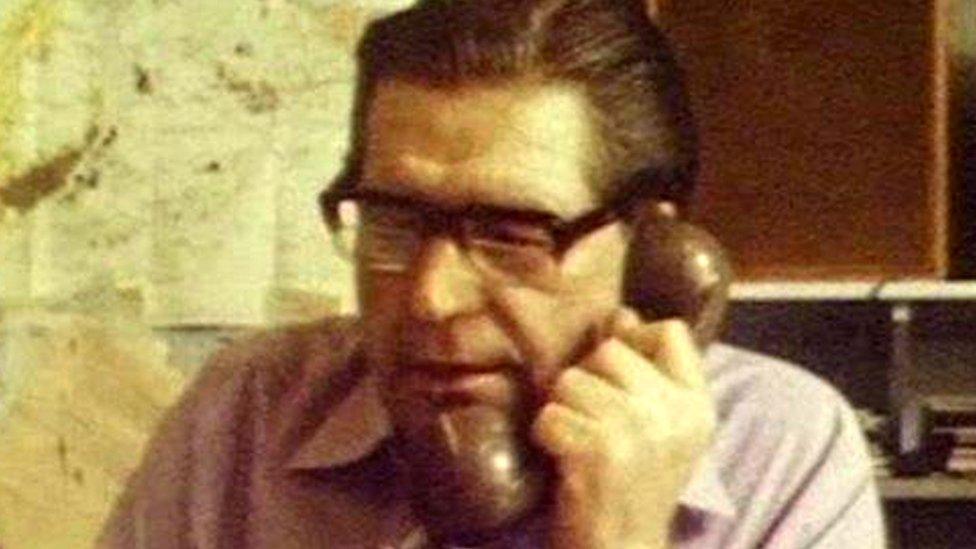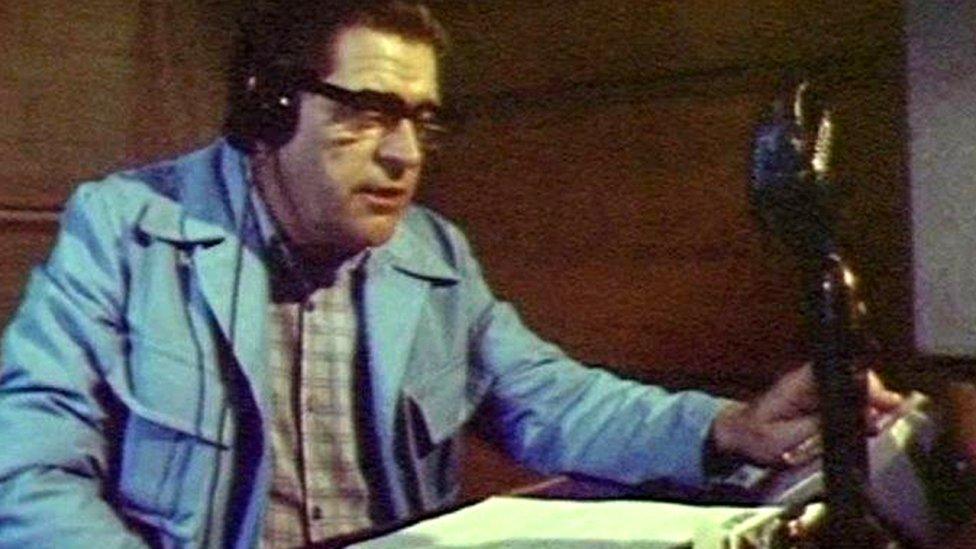'Stone of Destiny' scoop reporter Arthur Binnie dies aged 89
- Published

Arthur Binnie was a young journalist in Arbroath when he got the scoop
Arthur Binnie, the first journalist to report on the discovery of the missing Stone of Destiny, has died at the age of 89.
Arthur was a reporter with the Arbroath Herald when the stone was removed from Westminster Abbey in London by four nationalist students on Christmas Day 1950.
The stone had been there for more than 600 years since it was taken from Scotland in 1296 by Edward I, who knew its importance as the Coronation stone of Scottish kings at Scone.
From then on, for centuries, it sat under Westminster's Coronation chair.
The nationalists' stunt shocked the establishment. For months, police searched for the stone on both sides of the border.

Arthur Binnie later became the head of the BBC newsroom in Aberdeen
Finding it at Arbroath Abbey four months later was the scoop of Arthur Binnie's long career, which included 20 years as the head of the BBC's Aberdeen newsroom.
Arthur was at his desk in Arbroath on 11 April 1951 when the phone rang with a tip that if he went to the abbey he might find something of interest.
That was all. He wasn't told anything more.
He took the office camera and raced to the abbey, cycling so hard the chain came off his bike.
When he arrived, he realised very quickly the scale of the story.
Everyone knew the Stone of Destiny was missing. Arthur was met by the uniformed custodian who led him silently through the abbey ruins to the high altar.
On 11 April 1951, local reporter Arthur Binnie "scooped" the world's press by being first on the scene when the Stone of Destiny was discovered dumped in Arbroath Abbey
Years later, Arthur described what happened.
He told me: "There, a blue and white Saltire was covering a fairly bulky object which appeared to be sitting on a stonemason's barrow.
"I didn't need rocket science to deduce what it might be and when the custodian pulled away a corner of the Saltire, there it was ... the Stone of Destiny."
He took some photographs and the custodian gave him an envelope with a message from the four students.
Then Arthur Binnie hurried back to his office, puzzled about why no other reporters or photographers had been there.
Later he learned there'd been a mix-up.
A local councillor who'd been supposed to alert journalists had decided to let the police know first but the officer in charge in Arbroath that day took a while to establish the story wasn't a hoax.
Arthur Binnie had the discovery of the Stone of Destiny to himself.
The news went worldwide.
His picture of the stone was on the front pages of national papers in the UK and the United States.
He said the extra money he earned came at an ideal moment.
"I did rather well from all the stories and bits and pieces," Arthur said.
"So much so much so that I was able to get married the following year. So I was grateful for that."
Arthur Binnie moved to Aberdeen soon after his Stone of Destiny scoop.
There's been a debate over the years about whether the sandstone block left in Arbroath Abbey was the genuine article.
Arthur saw it close up and believed it was.
He was a meticulous journalist who advised young colleagues to stick to the ABC of the trade: accuracy, brevity and clarity.
He and his wife Bette celebrated 63 years of marriage in September.
The Stone of Destiny was returned to Scotland permanently in November 1996.